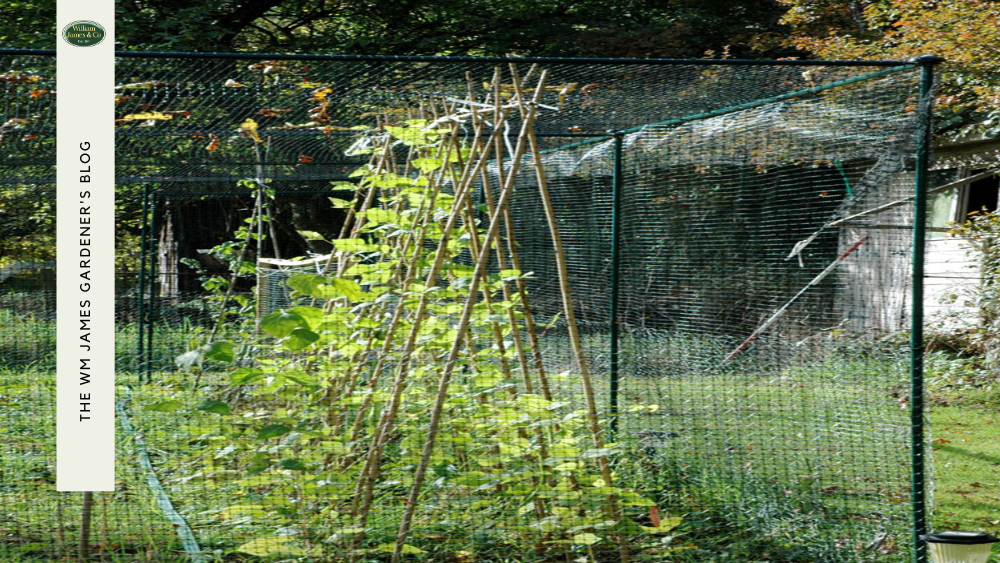We use cookies to make your experience better. To comply with the new e-Privacy directive, we need to ask for your consent to set the cookies. Learn more.
How & When to Plant Spring Bulbs in the UK
- Admin
- WM James Gardening Blog
- 1 Oct 2024
-
66views

If you're looking ahead to spring and want a garden full of daffodils and hyacinths galore, read through our helpful guide on when to plant spring bulbs in the UK.
Spring is a wonderful time for colourful plants to thrive, especially if you begin planting your bulbs between September and November when the soil is still warm.
Spring-flowering bulbs, such as crocus and tulips, can make a great addition to your garden display. Varying in colour and size, flowers can add a lot of character to any outdoor area, creating a beautiful spring landscape you can enjoy during the warming months.
Bulbs are also among the easiest things to grow and don't require any specialist knowledge if you're an amateur garden enthusiast.
We’re going to take you through the best time to plant your spring bulbs, as well as some tips and tricks to ensure they bloom beautifully.
The Best Time to Plant Spring Bulbs: Our UK Bulb Planting Calendar
Before we go into the how to's and how 'not' to's, here's our basic bulb planting calendar for UK gardens, so you can keep track of when to plant bulbs all year round.
| Months to Plant | Spring Bulbs |
| September-October | Snowdrops, crocuses, hyacinths, daffodils, alliums |
| November | Tulips, crocuses, daffodils, crown imperials |
| December | Tulips |
| April-May | Lilies, dahlias, begonias, cannas |
| August | Autumn-flowering crocuses |
When to Buy Your Spring Bulbs
Obviously, you shouldn't buy a tulip bulb in August, because you'll be waiting around to plant it for months, but there are some other things to watch out for.
You should look for plump and firm bulbs and avoid those that look squidgy or mouldy. A quality bulb is more likely to grow a quality plant, so it's best to select with care.
You should also be aware that the larger the bulb, the larger the plant, and vice versa.
It's best to hold off on buying bulbs until you're ready to plant. That way, you won't have to buy the ripest bulb you can find.
How to Plant Your Spring Bulbs
Your bulbs will be happiest in borders and containers. We will discuss each one in detail, but first, a general rule of thumb: it's important to plant the bulb as soon as you purchase it in its dry, dormant, leafless, and rootless state. Otherwise, you risk poor flowering.
Where to Plant Your Spring Bulbs
Each bulb is different, so each one will have different requirements, but most appreciate a sunny and well-drained spot because they originate from drier climates.
Certain bulbs, such as Cardiocrinum, however, can handle a cooler, moister environment. For bulbs like this, choose a shaded area and water regularly.
Other than that, see how you go!
Bulbs are much hardier and easier to maintain compared to seeds, especially tulips. So even if you can't provide exact, perfect conditions for your bulbs, as long as you roughly adhere to their preferences, it's difficult to go wrong.
|
Planting Spring Bulbs in Pots Containers are a great way to ensure you have an element of colour in any sized space. You can either plant your bulbs so they flower simultaneously, or you could plant various bulbs in layers so that they flower in succession over a period of time. Whichever way you want to do it, here are some tips on planting bulbs in pots…
Step 1) Make sure your plant pot of choice is at least 30cm wide and deep, with drainage holes at the base. Step 2) Use at least 10cm of compost inside your pot, and place the bulbs shoot upwards. Make sure to place each one a bulb width apart. Step 3) Cover the bulbs completely, then gently firm the compost down. If you're layering multiple bulbs, repeat steps 2 and 3 on top of the first layer. Our Burgon & Ball Compost Scoop can be a helpful aid when working with compost. It was named Best Buy in Amateur Garden Weekly Magazine, so you know it's a trusty tool! Step 4) To deter weeds, spread some gravel over the surface, then water to settle the compost. Step 5) Place the pot outside in a warm and sunny spot, and the first shoots will start to appear in Spring. |
|
Planting Spring Bulbs in Borders A border can be a stunning addition to an outdoor space, so here is a step-by-step on how to achieve your own spring border blooms…
Step 1) Plant in groups of 6, the more grouped together, the more impressive the display. Step 2) Dig a hole wide enough for your bulbs. They should be planted two to three times their depth. The best way to achieve the correct sized hole, is with our reliable, RHS-endorsed Burgon & Ball Short Handle Bulb Planting Tool, which makes it easy to create the perfect sized hole for each bulb. Step 3) Place the bulbs in the hole with their shoot facing upwards, and at least a few inches away from each other. Step 4) Replace the soil and firm it down with the back of a rake, but be careful not to stand on the soil; you don't want to disrupt your bulbs! Step 5) If the ground is moist or the bulbs are planted in autumn, watering isn't critical. If not, water straight away. |

How to Care for Your Spring Bulbs After Planting
As we're discussing when to plant spring bulbs in the UK, most of these are hardy bulbs, as you now know, so little maintenance is required. However, there are still a few things to think about...
Watering
All bulbs need plenty of water during growth and for six weeks after flowering until they become dormant. Bulbs in containers may need watering a little more – the compost should feel moist but not soggy.
Our 10-Litre Plastic Watering Can with Rose Attachment is perfect for regular gardening and caring for your bulbs. Its ergonomic handle and spout make it comfortable for everyday use.
Nutrition
Bulbs love a high-potassium fertiliser, such as liquid tomato feed, every seven to ten days. You should feed them as soon as the shoot appears from the soil until the foliage starts to die down at the end of the season.
For bulbs in containers, use fertiliser before flowering until the foliage begins to turn yellow and die back.
Deadheading
Cutting off spent flowers will allow the plant to put its energy back into the bulb for the next season, rather than wasting it on making seeds.
You should leave foliage intact until it turns yellow and withers naturally, though, as this is when the nutrients from the leaves are fully absorbed back into the bulb.
Our Pocket Size Garden Pruners are great little snippers for deadheading and other small cutting tasks. The sharp blade and ergonomic handle make them easy to use and perfect for precision work, allowing you to quickly remove spent flowers without damaging the rest of the plant.
Squirrels
Squirrels are attracted to bulbs because they are a protein-rich plant that the creatures need to survive. Unfortunately, they dig them up, ruining your beautiful plants.
If your garden is squirrel-prone, try out our Green Garden Netting, which is great at protecting plants from small animals. It's UV-stabilised for longevity and is made to order on width and height, a perfect addition to your bulb border or pot.
Caring for Older Plants
If your bulbs have become congested over time, this can reduce flowering in your display. This is easily resolved by ensuring you divide the clumps up every few years to keep them full and vibrant.

Takeaways: Planting Healthy Spring Bulbs at Home
Planting bulbs in time for spring can really elevate your garden and turn it into a flower haven when you reach the season after a cold winter.
Daffodils, for most people, indicate that warmer days are coming, so why not try planting them this autumn and give yourself that reminder?
During the next few months, you'll have plenty of time to plant your bulbs for next spring's flowering season. Just remember to be mindful of squidgy bulbs, watering requirements, and squirrels!
You can shop our range of quality hand garden tools, like our Bulb Planting Tool and Garden Pruners, to ensure you have everything you need for the job.
Discover Our Full Range of Garden Hand Tools
FAQs
What Happens if I Plant Spring Bulbs Too Early?
You shouldn't plant bulbs when the soil temperature is too warm, as by doing so, you can cause them to 'cook'.
Can You Plant Bedding Plants on Top of Bulbs?
Yes. You can fill gaps in the compost to create a display whilst bulbs are not flowering. Check out our blog post about bedding plants for information on when and how to do bed plants.
Should Bulbs be Completely Covered with Soil?
Bulbs should be fully covered and gently firmed to fill any air pockets.
Can You Leave Bulbs in Pots All Year Round?
Hardy bulbs can be left in the ground all year. Those in pots should be fine, too, but can be moved into an unheated greenhouse.
When Should I Plant Daffodils in the UK?
November is the latest that you should plant daffodil bulbs in the UK. Anytime from September to November is ideal.













